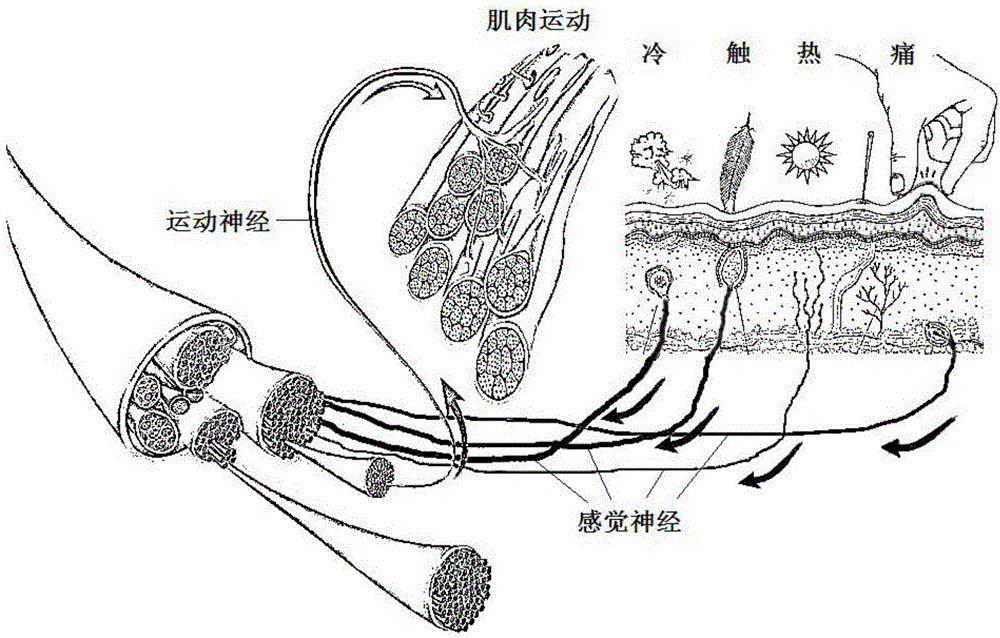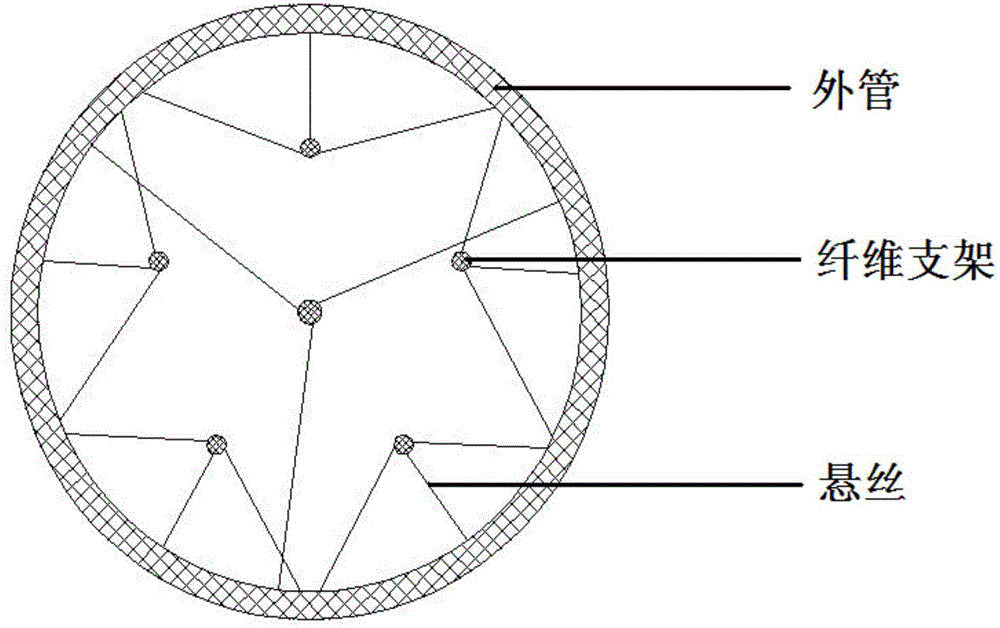Tissue engineering nerve graft with suspension fiber scaffold and preparation method thereof
A fibrous scaffold and tissue engineering technology, which is applied in the fields of medicine and biomedical engineering, can solve the problems of affecting the treatment effect, the difficulty of uniform distribution of microfilaments, and the limited effect of orientation and guidance, so as to achieve improved success rate, low cost, and avoid Effects of the immune tissue response
- Summary
- Abstract
- Description
- Claims
- Application Information
AI Technical Summary
Problems solved by technology
Method used
Image
Examples
Embodiment 1
[0052] (1) the benzoic acid solution 50ml (benzoic acid solution concentration of 0.1mol / L) of preparation 3% polylactic acid is contained in the ink cartridge that model is HP51626A;
[0053] (2) Adjust the printer nozzle needle diameter to 2μm, the number of needles to 4, the distance from the nozzle to the bottom layer to 10mm, and the booster pulse frequency to 1v;
[0054] (3) Accurately simulate the three-dimensional spatial structure of different nerves, compile corresponding control programs, preset the three-dimensional model of the printer, and design the shape of tissue-engineered nerve grafts: tissue-engineered nerve grafts include catheters and intratube fiber scaffolds, such as image 3 , Figure 4 As shown, each fiber support is provided with a number of suspension wires along the fiber length direction to connect with the inner wall of the catheter, and the fiber support is suspended in the catheter through the distribution of suspension wires. The connection ...
Embodiment 2
[0062] (1) 50ml of citric acid solution (concentration of citric acid solution is 0.05mol / L) of preparing 5% sodium alginate is contained in the ink cartridge that model is HP51626A;
[0063] (2) Adjust the printer nozzle needle diameter to 100 μm, the number of needles to 16, the distance from the nozzle to the bottom layer to 25mm, and the booster pulse frequency to 15v;
[0064] (3) Accurately simulate the three-dimensional space structure of different nerves, compile the corresponding control program, preset the three-dimensional model of the printer, and design the shape of the tissue-engineered nerve graft: the tissue-engineered nerve graft includes a catheter and a fiber scaffold in the tube, such as image 3 , Figure 4As shown, each fiber support is provided with a number of suspension wires along the fiber length direction to connect with the inner wall of the catheter, and the fiber support is suspended in the catheter through the distribution of suspension wires. ...
Embodiment 3
[0072] (1) 50ml of acetic acid solution (concentration of acetic acid solution is 0.1mol / L) of preparing 5% chitosan is contained in the ink cartridge that model is HP51626A;
[0073] (2) Adjust the printer nozzle needle diameter to 50 μm, the number of needles to 9, the distance from the nozzle to the bottom layer to 40mm, and the booster pulse frequency to 10v;
[0074] (3) Accurately simulate the three-dimensional spatial structure of different nerves, compile corresponding control programs, preset the three-dimensional model of the printer, and design the shape of tissue-engineered nerve grafts: tissue-engineered nerve grafts include catheters and intratube fiber scaffolds, such as image 3 , Figure 4 As shown, each fiber support is provided with a number of suspension wires along the fiber length direction to connect with the inner wall of the catheter, and the fiber support is suspended in the catheter through the distribution of suspension wires. The connection positi...
PUM
| Property | Measurement | Unit |
|---|---|---|
| diameter | aaaaa | aaaaa |
| thickness | aaaaa | aaaaa |
| diameter | aaaaa | aaaaa |
Abstract
Description
Claims
Application Information
 Login to View More
Login to View More - R&D
- Intellectual Property
- Life Sciences
- Materials
- Tech Scout
- Unparalleled Data Quality
- Higher Quality Content
- 60% Fewer Hallucinations
Browse by: Latest US Patents, China's latest patents, Technical Efficacy Thesaurus, Application Domain, Technology Topic, Popular Technical Reports.
© 2025 PatSnap. All rights reserved.Legal|Privacy policy|Modern Slavery Act Transparency Statement|Sitemap|About US| Contact US: help@patsnap.com



